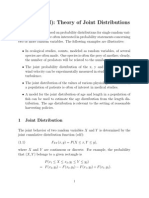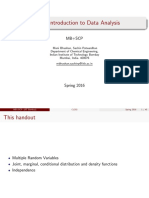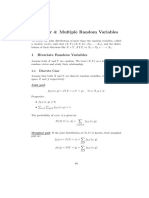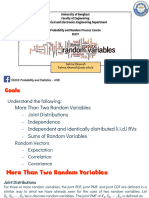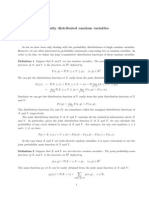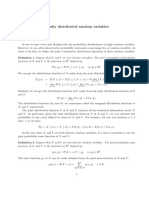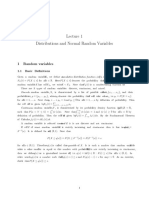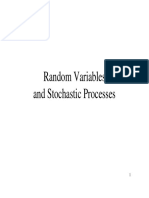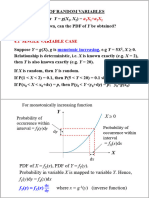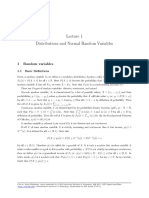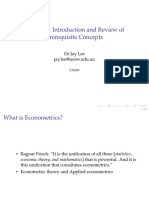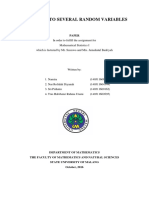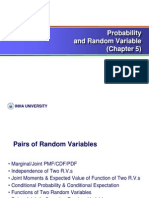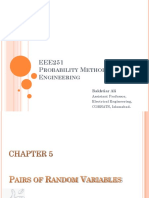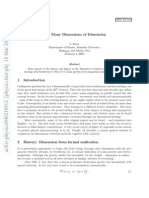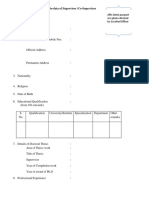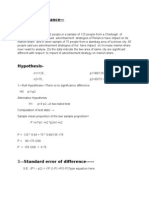0% found this document useful (0 votes)
77 views34 pages13 Independent Random Variables
P(first to arrive waits > 10 minutes for the other) = ?
The probability that the first person to arrive waits more than 10 minutes for the other person can be calculated as follows:
1) The time of arrival for each person (X and Y) is independently and uniformly distributed between 12:00 and 12:30 minutes.
2) The probability the first person waits more than 10 minutes is the probability X + 10 < Y, which is equal to P(X + 10 < Y) + P(Y + 10 < X) due to symmetry.
3) This probability is calculated as 2 * the integral of the joint probability density function fX,Y(x,y
Uploaded by
Antonio JCopyright
© © All Rights Reserved
We take content rights seriously. If you suspect this is your content, claim it here.
Available Formats
Download as PDF, TXT or read online on Scribd
0% found this document useful (0 votes)
77 views34 pages13 Independent Random Variables
P(first to arrive waits > 10 minutes for the other) = ?
The probability that the first person to arrive waits more than 10 minutes for the other person can be calculated as follows:
1) The time of arrival for each person (X and Y) is independently and uniformly distributed between 12:00 and 12:30 minutes.
2) The probability the first person waits more than 10 minutes is the probability X + 10 < Y, which is equal to P(X + 10 < Y) + P(Y + 10 < X) due to symmetry.
3) This probability is calculated as 2 * the integral of the joint probability density function fX,Y(x,y
Uploaded by
Antonio JCopyright
© © All Rights Reserved
We take content rights seriously. If you suspect this is your content, claim it here.
Available Formats
Download as PDF, TXT or read online on Scribd
/ 34

